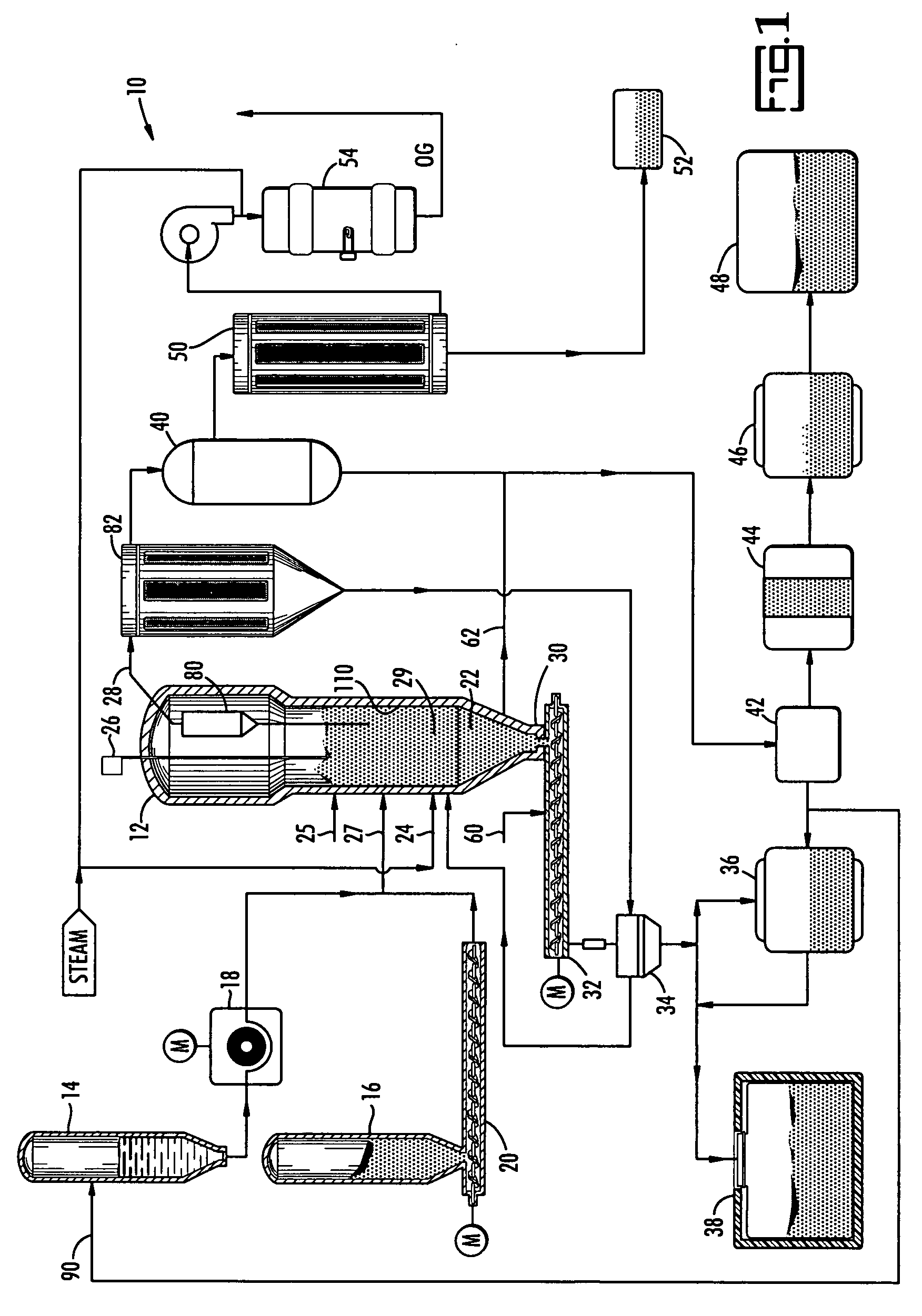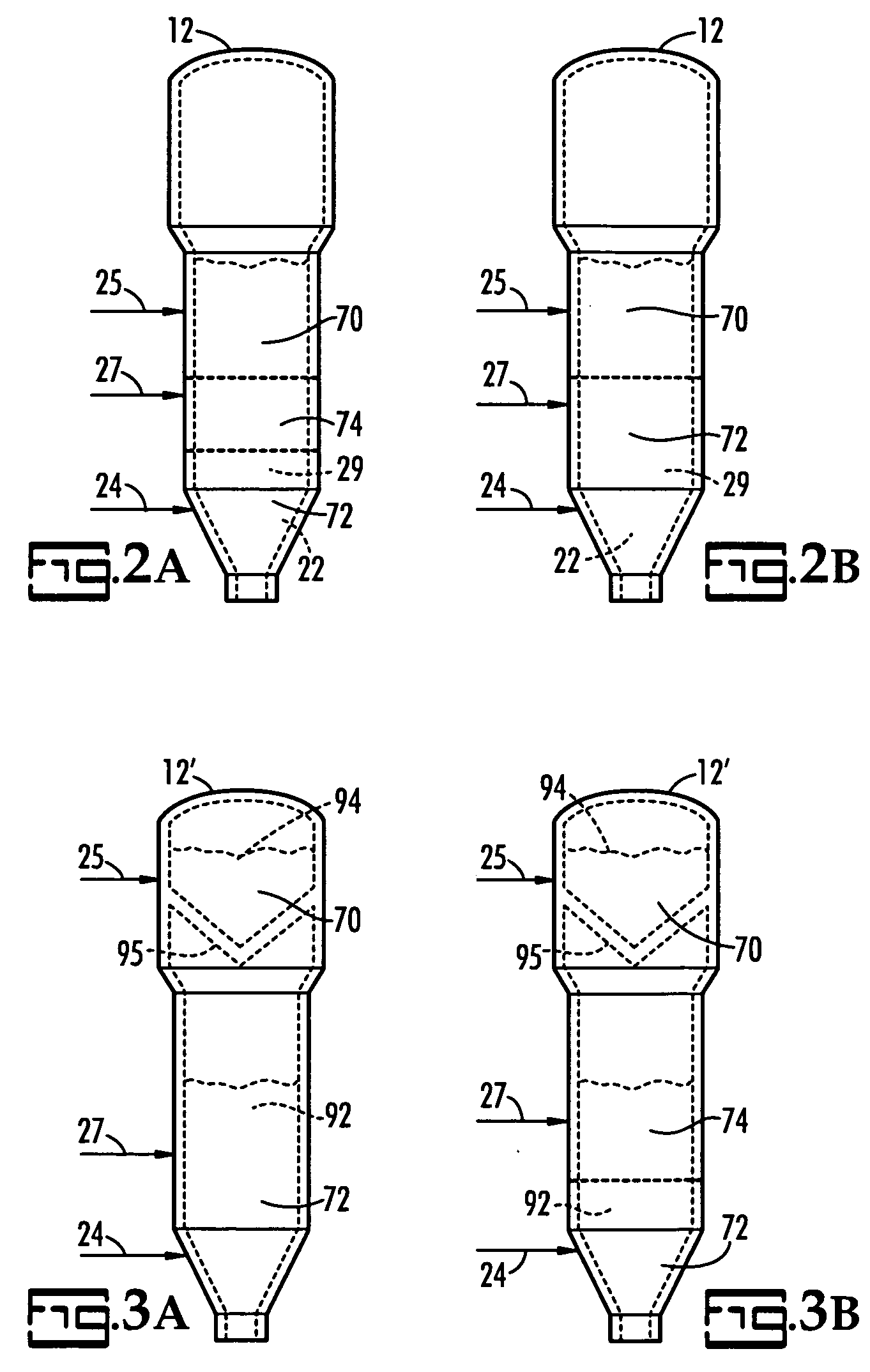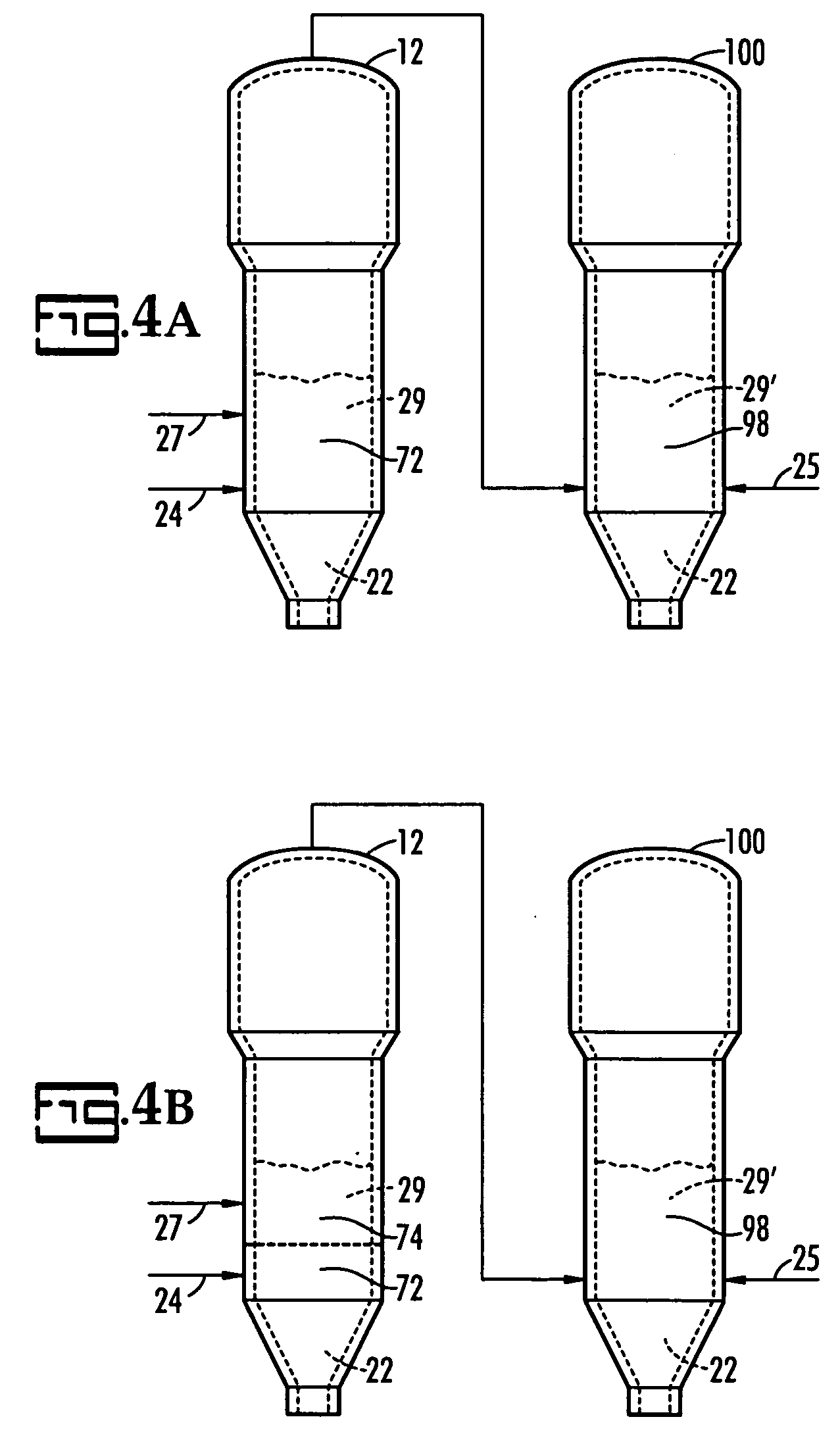Single stage denitration
- Summary
- Abstract
- Description
- Claims
- Application Information
AI Technical Summary
Benefits of technology
Problems solved by technology
Method used
Image
Examples
Embodiment Construction
[0040] The present invention is an apparatus and process for converting NOx from nitrogen oxide-bearing compounds and waste product feeds. The invention also involves the conversion of alkali metals, S, Cl, and F into stable mineral form. The present apparatus and processes will be described in particular with respect to radioactive waste; however, any nitrogen oxide-containing waste or product stream can be processed in accordance with the following process and with the components of the system. The wastes that can be processed according to the present invention include not only NOx containing waste streams resulting from the decomposition of ion exchange resins, but can also include nitric acid, nitrates, nitrites, and NOx containing waste stream resulting from nuclear reprocessing, explosives and energetics, solid rocket propellants, fertilizer and gaseous off-gas streams and the like. The waste stream can further include nitrogen oxide-containing materials in the presence of org...
PUM
 Login to View More
Login to View More Abstract
Description
Claims
Application Information
 Login to View More
Login to View More - R&D
- Intellectual Property
- Life Sciences
- Materials
- Tech Scout
- Unparalleled Data Quality
- Higher Quality Content
- 60% Fewer Hallucinations
Browse by: Latest US Patents, China's latest patents, Technical Efficacy Thesaurus, Application Domain, Technology Topic, Popular Technical Reports.
© 2025 PatSnap. All rights reserved.Legal|Privacy policy|Modern Slavery Act Transparency Statement|Sitemap|About US| Contact US: help@patsnap.com



